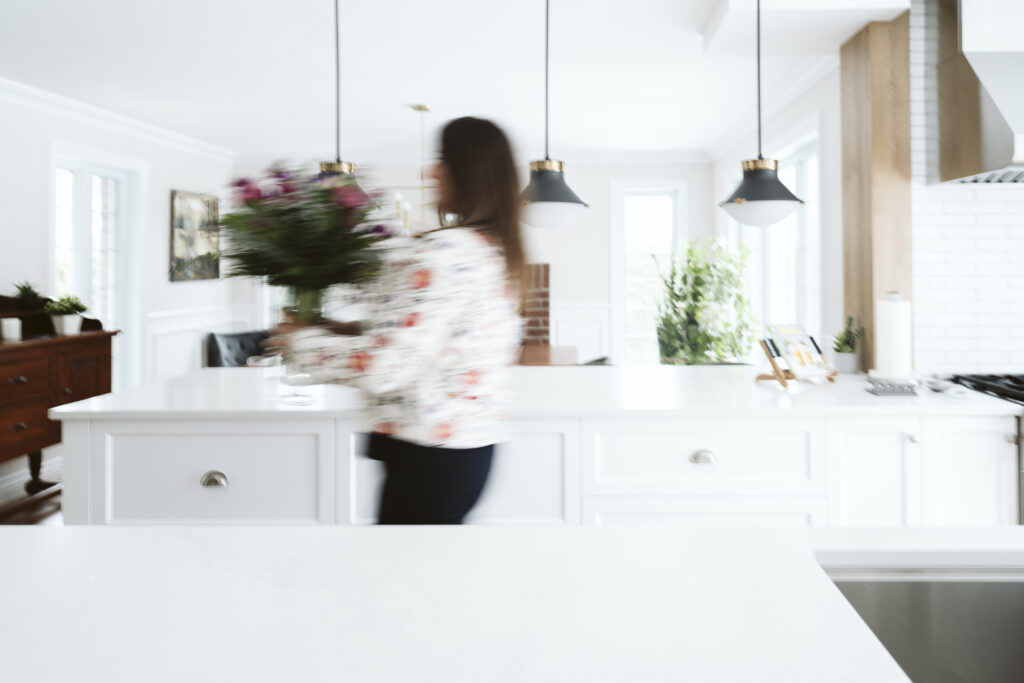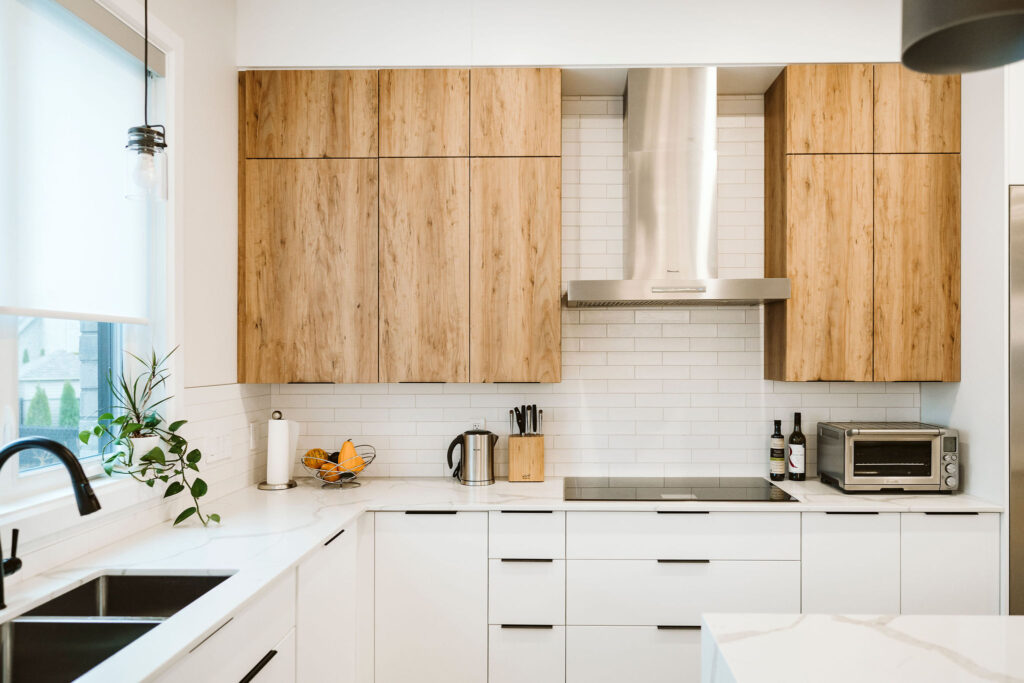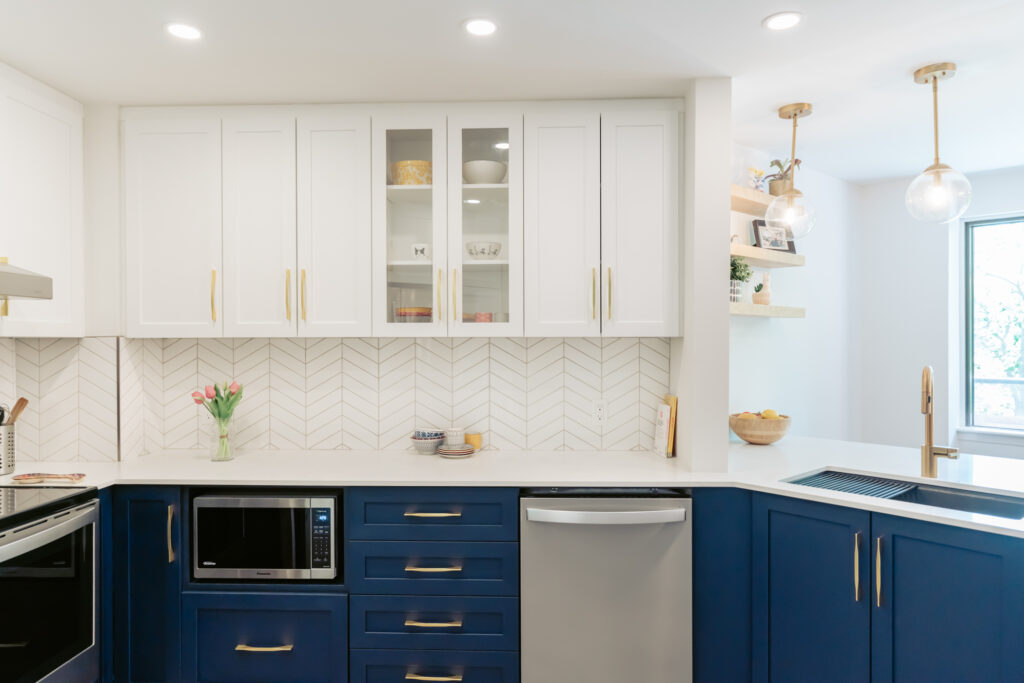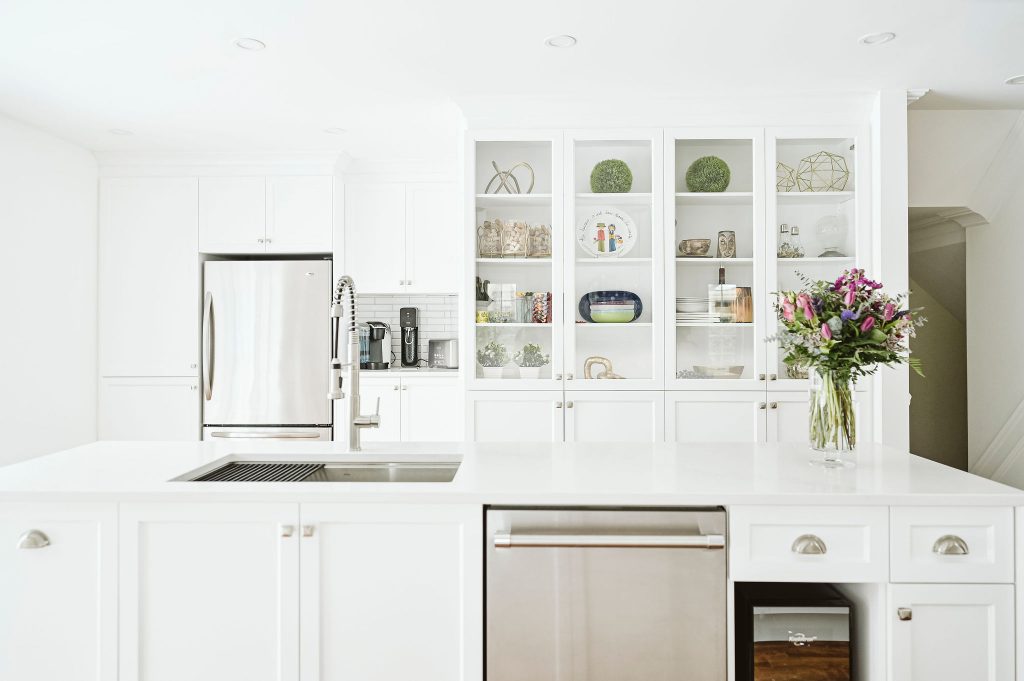
We live in a world of continuous change in terms of design and the way we live. The main issue in several important and predominant areas in our society is the question of sustainability and the environment. How can we improve our domain to be more in cohesion with nature? How can we make an effort to improve our ecological footprint? These are issues that we are hearing more and more about in society. The renovation world is no exception! It is important to question the sustainability and the relationship with the environment for the space we live in. This article will therefore discuss how to make a kitchen more ecological and sustainable. A question to ask yourself when deciding on your kitchen remodel, which is an important room in the house.
MAKE A MORE ECOLOGICAL KITCHEN BY CONSIDERING THE 3RS

The key is to start our design and renovation process with the 3Rs concept: reduce, recycle and reuse. We have to ask ourselves: what can I reuse or recycle in my current kitchen? There can be several answers to this question if we let our imagination run wild. A good form of reuse is to use part of the cabinets to make a laundry room or a storage room for example. Repaint the island, if it is still in good condition, to give it new life and match the new style of the kitchen. It always depends on the condition of our current kitchen, but sometimes repainting the cabinets and replacing the handles and countertops is enough to give this room a new life.
For recycling, we can find out if the materials in our current kitchen can be disassembled and recycled in some way. There are many materials that are easily recyclable, including glass, which is used for countertops and backsplashes, MDF, which is used in the manufacture of cabinets, and aluminum, which is increasingly used in kitchen accents. However, in order to benefit from the recycling of the material, it is important that it is separated from the other materials that make up the whole. This will be discussed further below in the section on assembly.
The third R, reduce, is used more in kitchen design. Trying to be more efficient and ergonomic in the design of our plans can give us the opportunity to reduce the number of cabinets needed to be manufactured, for example.
MAKE A MORE ECOLOGICAL KITCHEN BY CONSIDERING THE MATERIALS

In Quebec, we are fortunate to have many material companies that promote sustainable development. A good example is Uniboard, a melamine, MDF and laminate company, which is committed to a good environmental policy. Uniboard’s products are a great way to design a kitchen and earn points toward LEED certification, which is important when moving forward with a green and sustainable renovation or new construction. Some of Uniboard’s melamine is made from recycled materials, and is also recyclable. This company has affordable and accessible products that are of good quality, making it a top choice for a kitchen renovation.
To continue on this path, it is important to focus a little more on the MDF material that Uniboard produces. They have a range of products in the NU Green section for environmentally friendly MDF. First, it is made of recycled MDF. This material is made of wood particles compressed together into a medium density fiber material, which makes it easy to recycle and reuse. It is very popular and of perfect quality for making custom furniture, baseboards, moldings and more. Another advantage of Uniboard’s MDF is that the resin (glue) used to manufacture it is not based on formaldehyde, a gas that is often emitted by certain construction materials, which makes it more ecological than some competitors. This also makes it closer to the emissions that wood puts out into nature, which is more beneficial to us.
Other materials can be considered to have a more ecological and sustainable kitchen. Recycled glass is an interesting option that people are often not aware of. Recycled glass can be used to make countertops and backsplashes in the kitchen. It is an interesting option, sustainable and good for the wallet as well. Quartz countertops are also a great option since they are locally sourced in Quebec and are of very good quality. Be careful not to confuse them with Chinese quartz however. These are of lower quality, less durable, and come from much further away. They are less expensive, but with good reason!
The last material I’m going to talk about here is bioplastic. It is a form of polymer, made from plants or other natural materials. It is a material that is renewable and biodegradable. For the moment, this material is mainly used for small objects such as dishes and utensils. This makes it the perfect product to use outside in the summer, as it is more resistant. Bioplastics are being studied and tested extensively. I wouldn’t be surprised to see kitchen cabinets in this material hitting the market in the near future.
MAKE A MORE ECOLOGICAL KITCHEN BY CONSIDERING THE ORIGIN OF THE MATERIALS

If we want to make conscious choices, perhaps we should forget about Amazon and Wayfair and instead encourage local companies. However, care should always be taken when choosing the location. A material may have been sourced here, but sent to another country for processing or transformation. It is good to double check and research further if we have environmental awareness at heart.
A good example is Dekton, which is more environmentally friendly in its production. Dekton is also stronger and more durable in the long run. However, it must be taken into account that it is produced in Europe. Thus, it is necessary to evaluate if it is always more ecological with the trace it leaves during transportation, compared to a product like recycled glass or quartz that could be produced and transported right here in Quebec. However, more and more companies are aware that the environmental and local choice interests more and more customers. Many are also finding ways to reduce their environmental footprint. It is therefore often easy to find on their sites which elements or materials promote the environment, sustainable development or local purchasing. Uniboard for example, is made here in Quebec and has a whole tab on their website talking about their ecological and sustainable aspect.
In short, the key is to look at the materials you choose from several aspects to make a wise, ecological and sustainable choice. Not only do we have to look at what it is made of, but also where it comes from and where it is assembled, the consumption related to it, its movement, etc.
MAKE A MORE ECOLOGICAL KITCHEN BY CONSIDERING THE ASSEMBLY

Why talk about material assembly here? Because it can be a key element when designing a new ecological and sustainable kitchen that we don’t necessarily think about. Assembly should always be thought of as disassembly. Indeed, if the design of the cabinets was thought this way, it would be easier to change elements of the kitchen and recycle each part separately. Often, we can’t separate the different components, so we demolish the whole thing and it ends up in the garbage, when many of these components could have been recycled in different ways.
In addition, another point to consider when assembling a sustainable kitchen is that it be flexible, so that it can adapt to technological, cultural and functional changes. In an ideal world, plumbing and electricity would have easy access so that when it comes time to make changes or repairs, you don’t have to tear down walls or cabinets. For example, having removable panels would allow easier access to those hidden, but essential, parts of a kitchen and home.
TO MAKE A MORE ECOLOGICAL KITCHEN BY CONSIDERING THE CONSUMPTION

When it comes to creating an eco-friendly and sustainable kitchen, consumption is a very important issue to address. Energy consumption can be controlled with the choice of lighting and the choice of appliances. Choosing recessed LED lights, which consume much less energy, is a wise choice. The consumption of household appliances can be controlled in the choice of them and in the use. An induction cooker consumes about 20% less energy than a traditional stove. The location of the kitchen in the house and its windows to get natural light can allow us to not turn on the lights during the day, which can make a significant difference in the long term for electricity consumption. It’s little things like this that we do throughout the design process that will have an impact on our energy consumption.
MAKE A MORE ECOLOGICAL KITCHEN BY CONSIDERING THE ACCESSORIES

If there’s one aspect of kitchen renovation where it’s easy to make green and local choices, it’s in the accessories! In Quebec, we are fortunate to have a wide range of suppliers who offer interesting choices, from lighting, stools and tables to cutlery and textiles. Choosing local is already a step towards an ecological choice as the transport is less long.
Moreover, when the item comes from here, we know that the working conditions of the person who made the item are much better than if it comes from a country that underpays its employees or uses child labor. A good eco-friendly example for lunch counter stools is to choose something with recycled fabric, or made from recycled plastic faux leather.
There are also some Quebec artisans who work with recycled glass, which can be a great option for original lighting. Be careful to use light bulbs that do not consume a lot of energy! Boutiverre is an example of a company that works with recycled glass. You can find their products directly on their website or in the Vision and Artisan section of the Maison Simons website. This is a great initiative from this Quebec company that brings together many locally sourced items for the home that have an ecological vision. You can also find on their site some products from Luminaire Authentik, another Quebec-made lighting company, which are very trendy at the moment in kitchen renovations.
In conclusion, this article has discussed some of the principles for making a kitchen renovation that is more sustainable and environmentally friendly. Using the 3Rs rule (recover, recycle and reduce) will get you closer to that goal. The choice of materials and their origin will also have a great impact on the durability and the ecological aspect of your kitchen. Don’t forget to think about the energy consumption of your kitchen, and to choose local decorative accessories to complete such a project. Also keep in mind that these principles can be used throughout the house. It doesn’t have to stop at the kitchen! This can even lead us to think about other concepts, such as green roofs, which are good for regulating the temperature of the house, fighting heat islands, and why not, allow us to grow vegetables, which will then be consumed in our kitchen!
